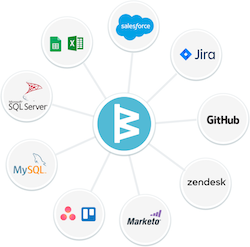At the end of the last decade, in early 2010, I started working at Google. I didn’t know exactly what to expect going in, but from everything I had heard, I was anticipating great things. And I wasn’t disappointed.
Besides all the amazing perks that tend to capture the public imagination at large, the thing that impressed me was a then lesser-known process of setting Objectives and Key Results (commonly known as OKRs) every quarter.

This process was simple, yet profound. It allowed each individual to decide and align on what was important for our company, team, and career at the beginning of each quarter, and then maintain focus on those Objectives throughout the quarter. Instead of getting distracted by urgent fires that were not aligned with our strategy every single day, this framework reminded all of us what was important. It worked as our compass throughout the quarter.
Fast forward almost a decade, and the opportunity to influence this framework is what thrilled me when I was presented with the opportunity to join WorkBoard, Inc. — a company that is focused on closing the Strategy-Execution gap using, you guessed it, OKRs. I joined them just over five months ago. What I discovered are three major improvements that WorkBoard has achieved in their SaaS application and the OKR framework over the past decade:
Measurable Key Results
Instead of simply rating Key Results from 0 to 1, which was the norm in the early days of OKR setting, WorkBoard’s app guides you to measure results and outcomes objectively, rather than measuring outputs. While creating measurable Key Results was always the spirit of the OKR setting process, the app provides the framework to help teams define and align better key results in the first instance — so our natural bias to describe output doesn’t prevent us from articulating the desired outcome.
Integrate with external data sources
Sometimes, your results are tracked in other systems. Native integrations with those systems to automatically update Key Results in WorkBoard creates increased transparency throughout the organization — automatically. Now, you are seeing and driving progress continuously rather than scoring mid and end of period — and thus have a higher awareness of your distance from the intended results every single day — leading you to make smarter choices about our time and effort.
Meetings that align with your Strategy
Instead of ad-hoc meetings, WorkBoard meetings are organized around a body of work, strategy and key results that are already available in the application. This encourages all participants to meet not for a status check (which is always available for anyone to see in WorkBoard) but to identify and remove roadblocks to your existing strategic Objectives. Ask yourself — how many meetings have you walked out of feeling confused about their purpose and outcomes? How would it feel to have laser-focused meetings with actionable outcomes?
And today, “Measure what Matters” has put OKRs on most executives’ radar. This is a movement. A movement to be more agile, measurable and transparent in the execution of strategy. These three improvements are the tip of the iceberg, and the field of strategy management is ripe for more disruptive innovations. The best is yet to come and I am stoked to be part of the journey.
PS: As companies get used to the OKR setting process, their requirements will mature and become more sophisticated. In my next blog, I’ll cover three evolutions to expect in the next 6–12 months in the OKR framework.












